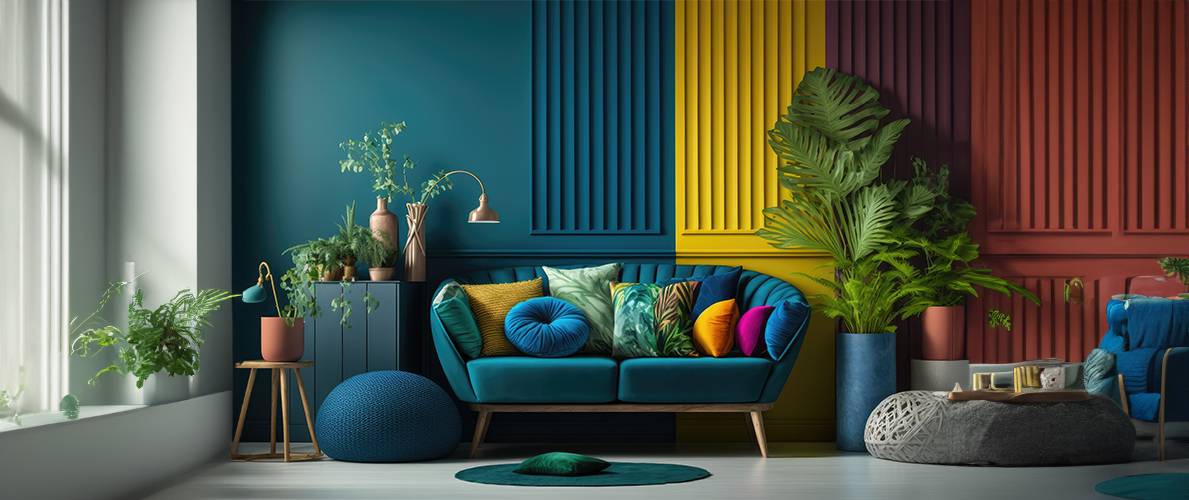Discover skilled interior design firms that redefine elegance.
Discover skilled interior design firms that redefine elegance.
Blog Article
Change Your Home With Important Principles of Interior Decoration and Aesthetics
The art of changing your home through the necessary principles of interior decoration and appearance needs a thoughtful method that harmonizes shade, equilibrium, and spatial understanding. By recognizing the influence of shade concept and the importance of structure and patterns, one can create spaces that are not just aesthetically attractive yet additionally deeply personal. Achieving this equilibrium involves greater than mere decoration; it encompasses a critical arrangement and an eager understanding of how each element interacts within an area. As we check out these fundamental principles, think about just how they may redefine your understanding of home and personal expression.
Recognizing Shade Theory
Understanding the principles of color theory enables designers to produce areas that resonate emotionally with passengers while satisfying practical demands. Each category plays a vital function in establishing harmony within an area.
The emotional impact of colors is extensive; cozy tones such as reds and oranges evoke energy and heat, while great tones like blues and eco-friendlies promote peace and tranquility. Additionally, the use of complementary shades boosts aesthetic interest, producing striking contrasts that can raise a space's charm.
Neutral colors, on the other hand, work as a functional backdrop, permitting other layout elements to shine. It is vital to consider aspects such as illumination and the space's purpose when selecting a color combination, as these can change the understanding of shades throughout the day.
Inevitably, a well-considered shade plan can transform a space, promoting a sense of convenience and design that straightens with the citizens' preferences. Mastery of shade theory is, for that reason, a vital skill for any indoor developer intending to produce harmonious and welcoming environments.
Accomplishing Balance in Layout
How can developers attain a sense of stability in their areas? Achieving equilibrium in design is fundamental to developing harmonious interiors.
Unbalanced balance, on the various other hand, relies upon differing elements that still achieve a natural look. This technique permits more vibrant and informal plans, supplying rate of interest while maintaining stability. By carefully selecting varying sizes, shades, and textures, designers can produce a visually compelling room that feels well balanced yet energised.
Radial equilibrium highlights a main focal factor with aspects emitting outside. This design is frequently seen in round designs, where furniture and design create a natural surround that attracts the eye internal.
Inevitably, attaining balance requires thoughtful factor to consider of range, percentage, and the relationships between elements. miami luxury interior design. By skillfully using these balance concepts, designers can transform spaces right into settings that really feel both cosmetically pleasing and functionally unified, enhancing the overall experience for passengers
Relevance of Spatial Awareness

An eager feeling of spatial recognition allows developers to identify centerpieces within a space, leading the audience's interest to crucial attributes while keeping an overall sense of unity. It also helps in the critical placement of lighting, which can significantly influence the perception of space and mood. Understanding spatial connections makes it possible for the designer to provide to the certain requirements of occupants, ensuring that each location offers its desired objective without compromising visual appeals.
Ultimately, spatial awareness is critical for optimizing the possibility of any indoor room. By very carefully thinking about the interaction between dimensions, layout, and function, developers can produce environments that not just meet sensible requirements but official website likewise evoke a sense of convenience and appeal, boosting the total living experience.
Incorporating Appearance and Patterns
Embracing a diverse range of textures and patterns can significantly enhance the visual and responsive charm of an indoor space. The strategic usage of different materials-- such as wood, metal, fabric, and rock-- creates depth and interest, making a room really feel a lot more inviting and dynamic. Incorporating smooth surface areas with harsh structures can establish a balance that attracts the eye and engages the detects.
When integrating patterns, consider both scale and rep. Big patterns can act as prime focus, while smaller, refined designs can match other components without overwhelming the room. Layering patterns, such as pairing floral pillows with candy striped tosses, includes intricacy and a feeling of harmony if carried out thoughtfully.
It is additionally vital to preserve a natural shade scheme, ensuring that textures and patterns interact instead of contend for interest. By choosing a couple of vital textures and patterns, you can produce a linked aesthetic that reflects your personal style while boosting the overall setting of the room. Inevitably, the cautious unification of these elements can transform a mundane space right into a sophisticated setting abundant with character and warmth.
Personalizing Your Space
Producing a space that mirrors your character is crucial to achieving a genuinely inviting atmosphere. Personalization in interior design permits you to infuse your one-of-a-kind design and rate of interests into your home, transforming it from a simple sanctuary into a haven that talks to who you are. Begin by picking a color combination that resonates with your feelings-- strong colors can energize, while soft tones use peace.
Incorporate artwork and decoration that reflect your interests, whether it be traveling, nature, or abstract ideas. Displaying personal collections, such as books, photos, or keepsakes, can evoke valued memories and develop focal points within a room. Furthermore, think about customizing functional items, like upholstered furnishings, to line up with your visual choices.

Final Thought
To conclude, the transformation of a home with the see here now important concepts of indoor style and looks necessitates a comprehensive understanding of shade concept, equilibrium, spatial recognition, appearance, and customization. Each element contributes dramatically to creating an unified and useful living setting - interior design firms. By thoughtfully incorporating these concepts, people can boost the aesthetic allure and psychological vibration of their spaces, eventually promoting a home that shows special identifications while giving convenience and practicality
Report this page